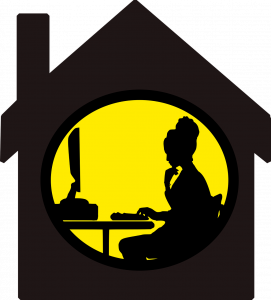
Remember how about a decade ago the open-office concept became a thing? Walls, doors and private offices got cleared away with the premise of promoting better collaboration as well as sharing information and ideas among workers. Whether you have personally experienced an open workspace or not, it is probably easy to understand possible drawbacks of such a workplace design. For example, as discussed in one of my previous blog posts, bestselling author Cal Newport argues that so-called deep work, which is needed to produce valuable and hard-to-replicate outcomes, requires focused attention and uninterrupted work. Open office workspaces with continuous chatter and movement of people don´t strike us as a particularly deep workspace, do they?! Recent studies funded by Harvard Business School also challenge the notion of better human collaboration. Specifically, scholars Bernstein and Truban (2018), found that transitioning to open office spaces significantly decreased the volume of face-to-face interaction (approx. by 70%), as people tended to socially withdraw to electronic interaction.
As workspaces continued to evolve, many companies seem to have outgrown the open office design, and today we hear more and more about something called activity-based working environments (ABW). In essence, ABW is a combination of an open office space with other private spaces, which are task-oriented. For example, such an office includes open common areas of unassigned seating, individual work cubicles, smaller and larger meeting rooms, lounge areas etc. In fact, judging from existing ABW offices, including at Facebook, Google or Skyscanner, the environments do feel very vibrant, comfortable and tempting to stay for as much time as an employee can… Despite the alluring idea and inviting images, ABWs don’t go without hiccups either. A recent study by Turku university researcher Haapakangas with colleagues (2019) showed that after relocation to an ABW satisfaction with communication and sense of belonging decreased among workers, especially those moving from private offices. Interestingly, one of the difficulties reported was how to locatecolleagues in such an activity-based working space.
Still, it feels like recent years’ efforts have focused on building amenity-filled workspaces, which improve communication, inspire productivity, stir up ideas, and entice employees to come and stay in the office. And then there was Covid-19…
Indeed, since the beginning of the year we have all taken part in the largest known experiment of remote work. As involuntary as the massive shift to remote work (where possible) has been, it does provides us with another possibility to rethink our current work designs. What if work can be performed well and productivity maintained even as the majority of employees work independently from their homes? What if amenity-filled offices with their endless possibilities to communicate are costly rather than effective? What if trying to lure people into the office is a very outdated notion in itself?
These questions and assumptions are both relevant and timely, because even with a (seemingly) decreasing scope of the pandemic, many companies allow employees to continue working remotely either until the end of the year or indefinitely. According to McKinsey research, such companies seem to make the right decision, as research data shows 80% of survey respondents enjoy working from home, 41% report increased productivity and 28% report the same levels of productivity as in an office. Also, remote work eradicates the local limitations of talent pools, hence allowing to attract and retain talent irrespective of its location. Finally, less office spaces and reduced need to commute also imply time and cost savings for both employers and employees. As concluded in another HBR article, ´Even if remote work turns out to be less productive on some metrics than others, reducing carbon-based emissions or the improving work-life balance could make up for it´.
So shall we trade one dogma for another? Remote work instead of collaborative physical offices? I certainly wouldn’t hurry with such a resolution. Similar to other work designs, remote work has of course its own pitfalls and challenges. Yet, I believe and sincerely hope that the current remote work experiment will show businesses and employees new possibilities, and the work design of the future will be even more flexible and accommodating to different needs and circumstances. After all, there should be plenty of different modes of how one can work well and get the job done.

